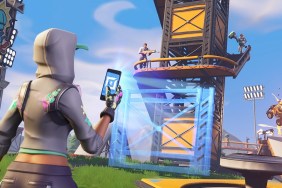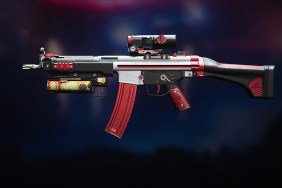Power Armor—particularly the badass Brotherhood of Steel helmet—is, for all intents and purposes, the icon for the Fallout series. I mean, check out the end of the recent Wasteland trailer above. Who doesn't want that?
So when Todd Howard revealed gameplay footage of Fallout 4 for the first time at Bethesda's E3 press conference and the cut-scene of The Sole Survivor entering the shell of the power amor appeared on screen, you could feel the entire theater gasp in a collective “Oh, snap!”. Then when we saw the sheer depth of power armor customization and the exhilarating liftoff of the suit by way of jetpack—yes, jetpack—we might as well have fallen out of our chairs.
Fallout 4 is not holding back when it comes to Power Armor… so nor should we. It's been a while since E3, and we now have several additional pieces of information that gives us a peek into how Power Armor works, even with the general information lockout by Bethesda on the game. So let's take the time to re-analyze what this overhaul of Power Armor will mean for Fallout 4 from the ground up before the game is released.
A Quick Recap of Power Armor So Far
While power armor has always been that oh-so-shiny set of equipment that all Fallout fans hope to acquire in at least one of their playthroughs, Fallout 4 elevates power armor to an entirely new level. Power armor is no longer just a suit that you place on your character in pieces through the inventory, but a suit that you'll need to assemble at a workshop piece by piece before entering the power armor suit like Tony Stark. And similar to the Iron Man suit, you'll need to insert a power core which looks like a large microfusion cell into the back of the suit before it can power on.
Wearing power armor will automatically bolster your character's strength, ripping off a minigun with ease and landing on the ground from about two or three stories high without so much as a dent. Don't you know? 4 out of 5 Vault Dwellers recommend power armor against a raging deathclaw. But more to the point, the perk for Strength 10 shows a picture of a power-armored dweller punching a poor guy who feels the impact of the punch so greatly that he turns into 2D paper. This seems to suggest that that this perk will enhance your unarmed strikes while in power armor with extra damage and stun potential.
Power armor has also been described to be more "vehicle-like" in part because it's used for maneuverability and due to the jetpack attached to the suit which, for a cost in AP points, will allow you to reach higher areas and dodge enemy fire. We've seen raiders attacking from rooftops, which thankfully adds verticality to the environments and I wouldn't be surprised if there are some places in the game that might require you to use the jetpack to access areas that you wouldn't be able to otherwise.

Power Armor HUD Display
Beyond that, wearing power armor temporarily changes the HUD as if your character is actually wearing the power armor helmet. The helmet-mounted display shows a dial for health, Geiger counter for radiation, armor component condition, and an ammunition/magazine counter. There's also an overlay for the compass, another gauge for action points, and an indication of overall core power. That's a lot of information on the screen, but here are a few analytical points.
In the majority of gameplay footage that we've seen of Fallout 4, the HUD is fairly clean and fades elements into the background that don't need to be displayed. The HUD while wearing power armor seems to be fixed in place for the sake of immersion, but some of the opaque elements do still fade into the background. The other point is that, though power armor is charged by a core, it seems as though power armor can be worn for a longer time than you might think otherwise, especially if cores can be recharged or if you can carry multiple cores in your inventory.
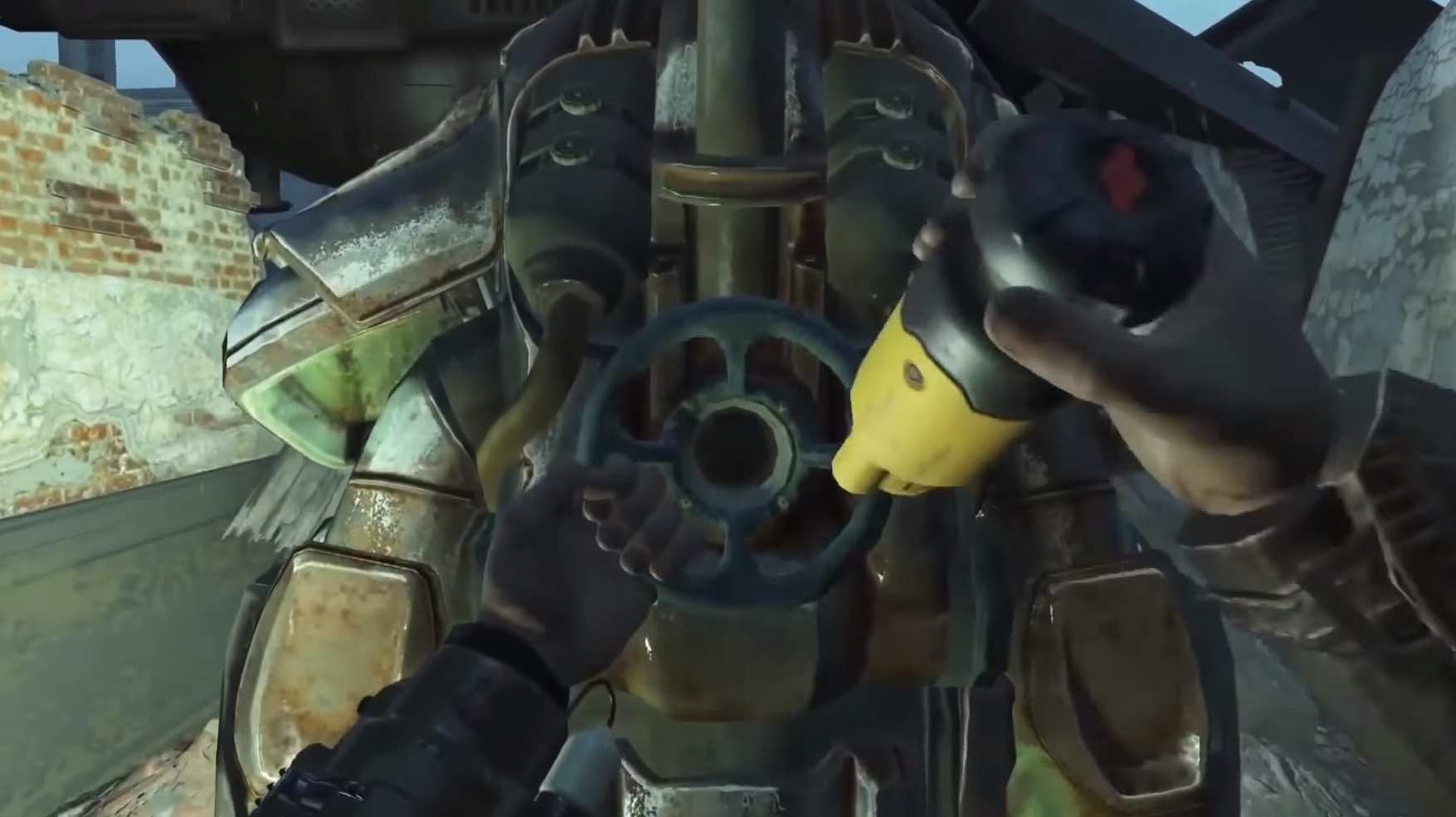
Power Armor HP and Energy Core
Now, we're not entirely sure how HP and core energy work while wearing power armor. But since HP and core energy are separate stats, it would seem that HP is indeed an indication of your character's overall health, which is then bolstered by the power suit itself. Each individual piece of power armor has its own HP stat, so it's likely that wearing power armor essentially increases your HP maximum. The durability of each limb is likewise determined by the HP stat of their respective armor piece.
When the power armor core drains to zero, it seems that you will be forced to eject from the suit. How recharging cores will work is unclear, though, and will be pivotal to how practical having power armor around will be. You don't want to have to leave a suit of power armor in the middle of a firefight, run back to a station to recharge the core, and come back to the suit. And no one wants to eject from a suit just to reinsert a full power core (again, if you can carry more than one core in your inventory), while your character becomes a target for bullets. (Some speculate that armor can be stolen, but I don't think this is the case as that would just be a major inconvenience.) Hopefully, there will be a way to recharge or replace power cores on the fly while you're wearing power armor.
That said, you may not need to eject from a suit even if the core drains to zero. Traditionally, power armor can be worn indefinitely in past Fallout games, so not being able to wear the suit as a default option would feel limited. If, indeed, power armor is restricted by time, it won't be practical to wear the suit while generally exploring the wasteland like before and will be reduced to being used for special scenarios. I hope that this isn't the case, and that The Sole Survivor can still wear power armor, albeit in a debilitated state (perhaps without the strength boost), when the core runs out of energy.
On a side note, the Intelligence 9 perk, as I explained in my analysis of the perk system, has the Vault Boy holding up a Lithium atom which could have to with battery life or overall core energy for power armor. If so, you might be able to increase the capacity of the core and/or carry multiple cores at the same time so that you can operate power armor continuously. Creating multiple cores from components or having a way to regenerate the cores you already own, with some depleted cores perhaps recharging at a workshop over time, would make power armor more easily serviceable and practical.

Repairing Power Armor Health
Repairing power armor is another issue altogether, if that's even necessary. Pouring through the video footage of Fallout 4 revealed so far, there's no indication that you'll need to repair items or that items have a durability or a condition stat at all. I'm certainly fine with that, since durability is really just a nuisance in RPGs, though I'm more than open to the game having an option to have durability for hardcore mode or something similar. If needing to repair equipment is a feature in Fallout 4, though, it will definitely lead to Power Armor being more difficult to manage in the long run.
Now, there's been footage of power armor breaking off: The Sole Survivor fires a rocket launcher at a Brotherhood Initiate and pieces of his armor fly off in multiple directions. While this could just be footage of a critical hit and has nothing to do with power armor durability, this would seem to imply that the limb condition on the HUD display for your power armor seems to show the respective limb health for each piece. The best evidence we have of power armor health is how the stat is displayed itself. While examining each power armor piece in the workshop, health is indicated as something like “75/75” instead of just “75”. This suggests that each part does not just give a simple HP boost but has health of its own that needs to be repaired.
If so, how damaged parts will be repaired is uncertain since you can't just stab a stimpak in there and expect metal to heal (duh). You may need to stand next to the power armor suit and repair it manually, much like how you need to give companions (who are now immortal) a stimpak if they fall in battle. It would seem far too burdensome only to be able to repair power armor back at the workshop; at the same time, just standing around repairing power armor would seem more like a maintenance chore than anything else.
On that note, some fans speculate that power armor could be called in and called out. If the Sole Survivor can call in a Vertibird, why not power armor as well? Or since we've seen jetpacks catapult power armor quite easily, perhaps you can remotely call in and call out power armor as well from a nearby workshop. That would definitely be convenient and make power armor less cumbersome as an inventory item.
I wouldn't be surprised, though, if the Sole Survivor could actually carry power armor around as a standard item. As Bethesda's Pete Hines replied on Twitter, "anything that you want to keep is on you to get home." Power armor does have an overall weight (the T-60b set has a weight of 96.4 pounds), so characters with high strength and several Strong Back perks (Strength 6 perk) will likely be able to store power armor in their inventory without much trouble at all. Perhaps the advantage would be that they won't need to wait for power armor to arrive and they can simply plop down the power armor suit down whenever they want and then pack it back in when it's in need of repair or runs out of energy.

So Many Power Armors, So Little Time
So far, we've seen images of different power armor suits already, including the T-45, T-51, and T-60, all with variations which are suffix-labeled from letters 'a' to 'f'. In general, weaker variations of the armor are closer to the 'a' through 'c' range while the stronger versions range from 'd' through 'f'. The same applies for the number label of the power armor. To summarize this in short (from the power armors that we know so far which have been confirmed in the game):
We know this from comparing the known stats for each of these pieces of armor which includes damage resistance from physical, energy, and radiation, HP, weight, and selling value. For a quick comparison, the T-60b power armor set has 480 more physical resistance and 200 more HP than the T-45b power armor set. Each piece can also be upgraded, so long as you have the required components like adhesives, aluminum, ceramic, circuitry, and rubber.
Likewise, modifications like Atom Cat paint (increases agility), military plating (increases strength), and lead plating (higher radiation resistance) also require components. The most interesting modification is the addition of a headlamp as a light source, which implies that you will want to use power armor at nighttime, in horribly lit buildings, and in caves. Wearing power armor, though, probably won't be a good idea if you're going for stealth.
While you can mix and match different parts from different power armor sets to your liking, it's not certain whether having a suit made from the same set will confer a bonus of some sort. It doesn't seem to be the case, however, since the totals for damage resistance, HP, and weight seem to be just the simple sum of each power armor piece's stats.
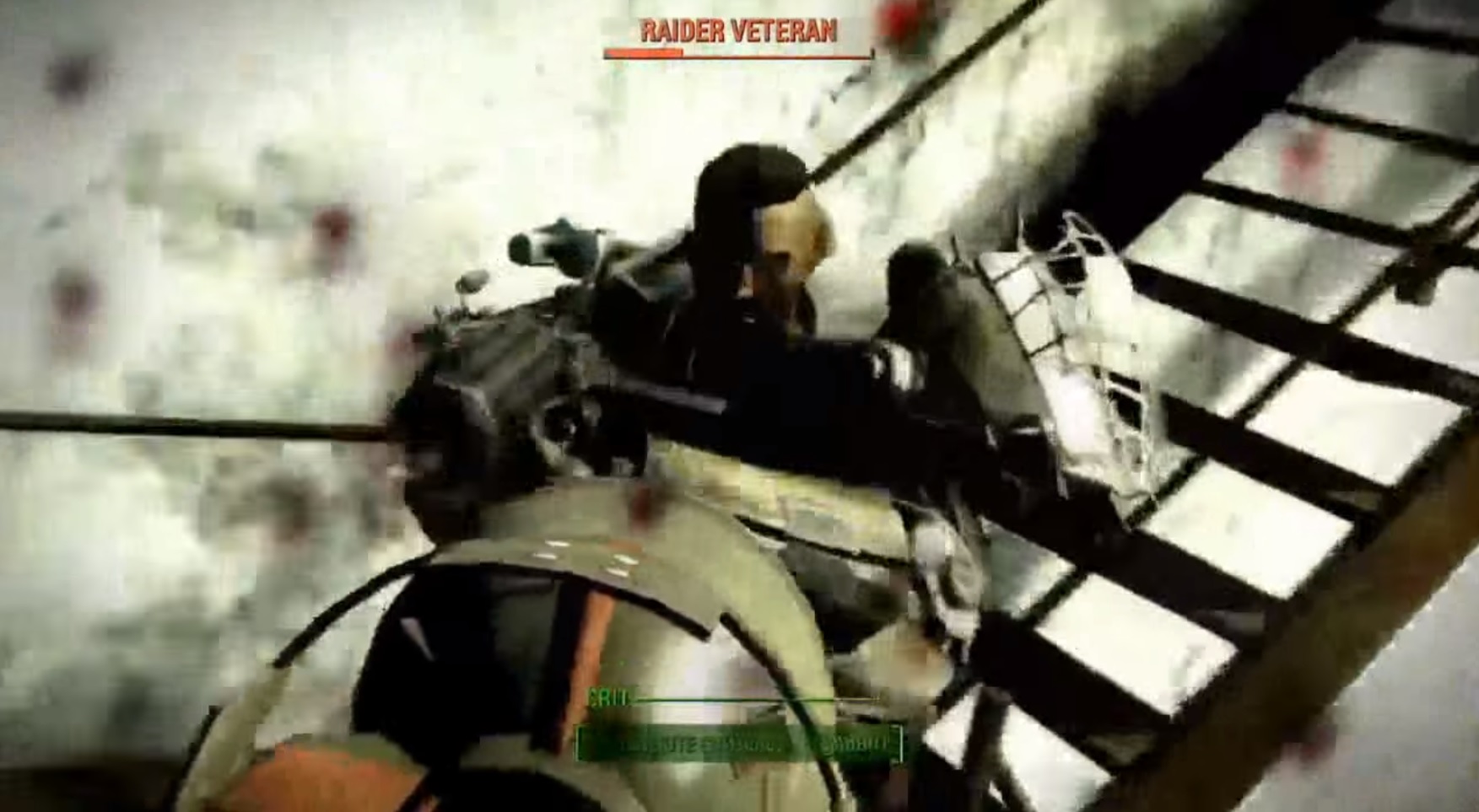
Since we've seen mere raiders and psychos wearing power armor in the wasteland, getting pieces of power armor shouldn't be too difficult to accumulate. It also provides evidence of power armor being more easily used throughout the wasteland so that you can be on par with the enemies in general exploration.
Power armor is in use before The Great War, with soldiers in power armor escorting people in the trailer to their respective Vaults. So the prevalence of power armor fits well with the new setting which involves The Institute, a secretive organization based at the Massachusetts Institute of Technology in the Commonwealth with scientists working in a sealed environments and experimenting on advanced technology and androids. In light of true human artificial intelligence, power armor would seem basic by comparison.
One relevant perk is Local Leader at Charisma 6, whose official description is "As the ruler everyone turns to, you are able to establish supply lines between your workshop settlements." This means that the map will have multiple points for workshops and that you will likely be able to repair and modify your power armor in places other than the now iconic workshop in Sanctuary Hills. Does this mean you can store different suits of power armor in different workshops? One could only hope. It would certainly broaden the range of suits you can craft, creating specialized power armor for minefields or areas of high radiation or areas that require a cool fashion statement. See? Power armor is multifunctional.
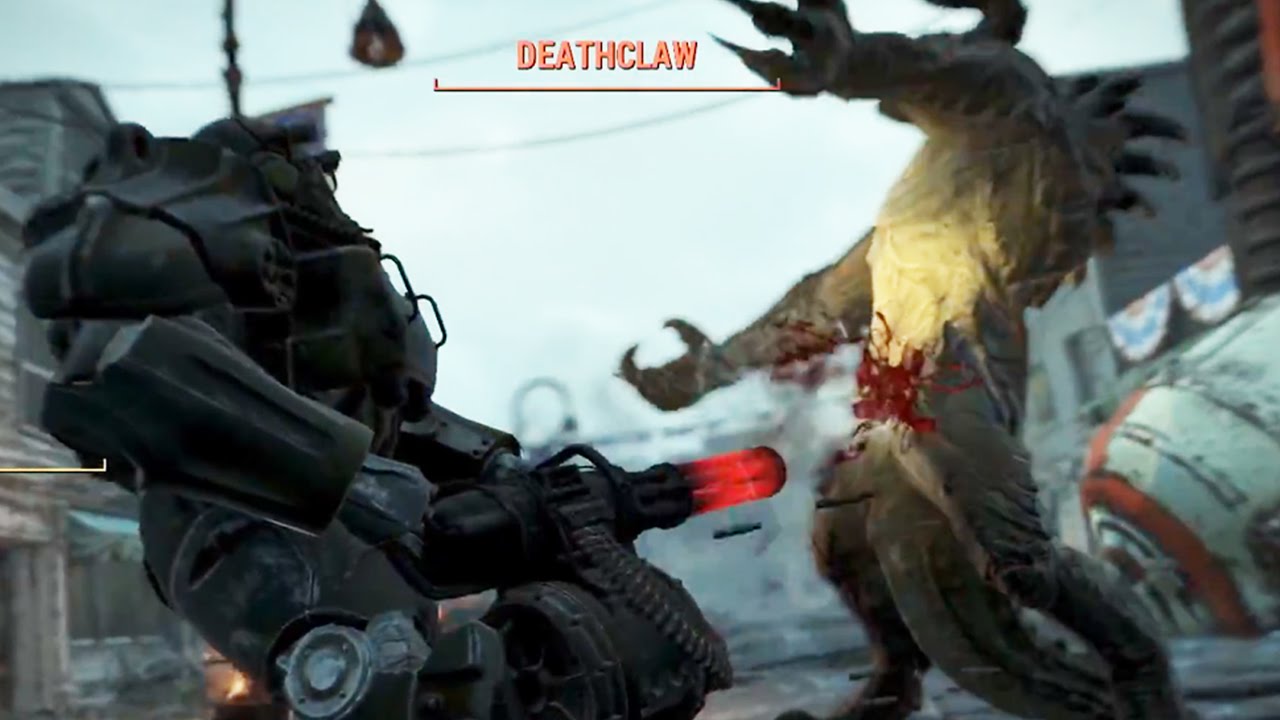
A Final Conclusion
Fallout 4 seeks to reinvent power armor with a new system that turns it into a truly special suit that feels far more empowering than before. It's supposed to be a beast that's worth the burden of love, of crafting it from scratch. It's still uncertain how Bethesda will make sure that power armor isn't too specialized and not too inconvenient to recharge and repair. We've seen snippets of The Sole Survivor and other NPCs casually walking around the Bostonian wasteland while wearing power suits with ease, so it should feel the same for the player. We'll know the final word when Fallout 4 arrives November 10, 2015. It's just about time to power up.

Fallout 4 Essential Reading:








